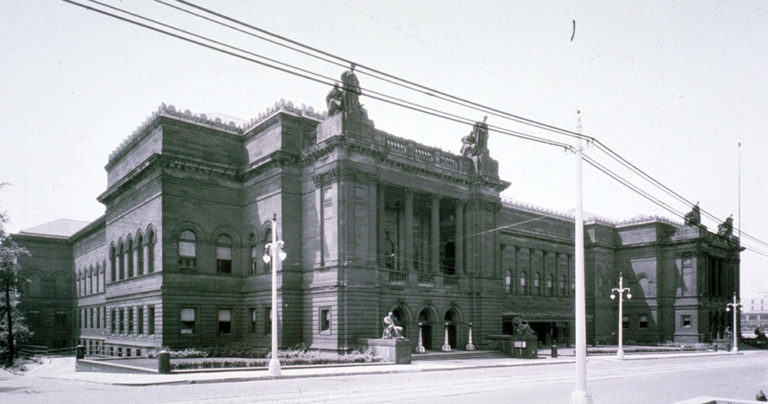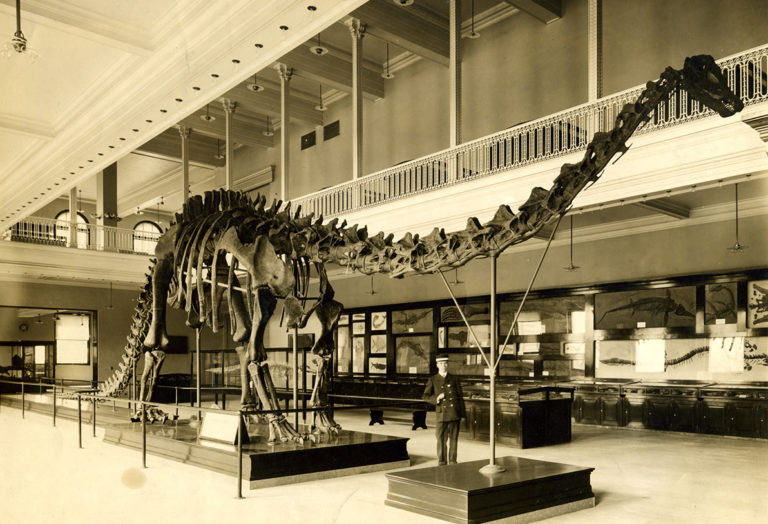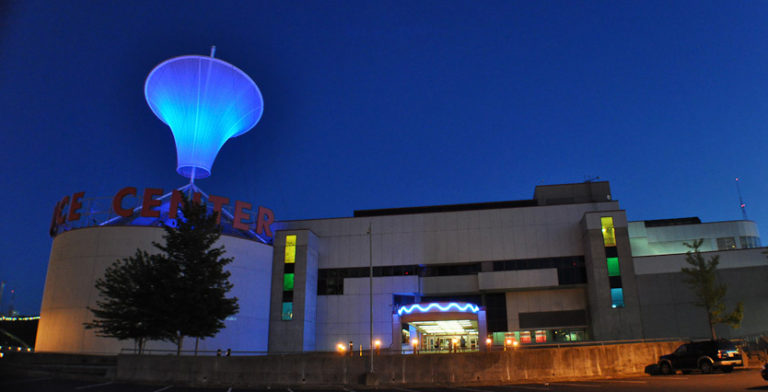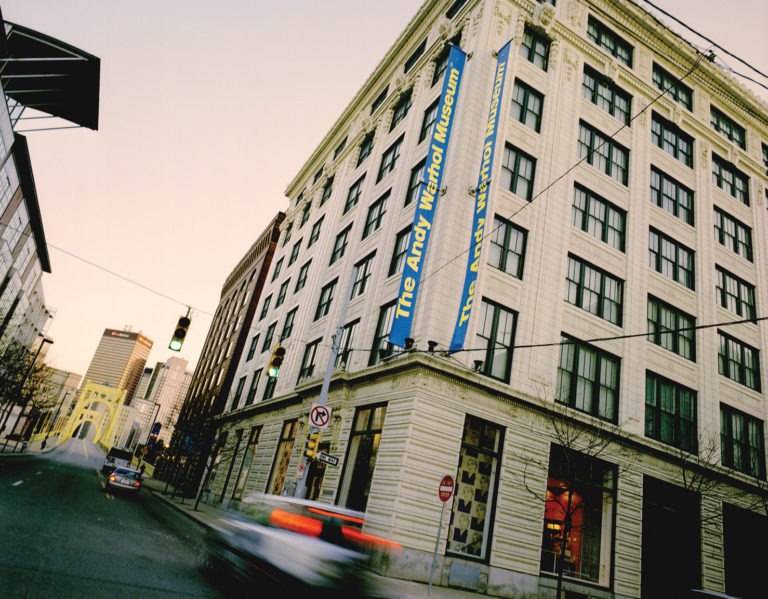Our History
The history of Carnegie Museums is bookended by two periods of fantastic growth and diversification. It all started in November of 1895 with the founding of Carnegie Institute, known today as Carnegie Museums of Pittsburgh. Andrew Carnegie called the original Oakland building—which included Carnegie Library of Pittsburgh—his “monument,” and he considered it the chief satisfaction of his life. That’s saying a lot, considering that this son of a poor Scottish weaver grew up to become one of the world’s most successful entrepreneurs and philanthropists.
A year later, Carnegie Museums held the first Carnegie International, second only to the Venice Biennale as the world’s oldest and most prestigious international exhibition of contemporary art, and the museum’s collection of art quickly grew as a result. Two years later, in response to news that the bones of “colossal” prehistoric creatures were being found out west, Carnegie sent a scientific crew to Wyoming, where they would discover the first of many world-famous dinosaurs.

The first Carnegie International, 1896
To make room for the display of his namesake, Diplodocus carnegii, Andrew Carnegie broke ground on Carnegie Museums’ first major expansion in 1904. While the most famous product of that growth was the great Dinosaur Hall, its neighboring hall, the Hall of Architecture, perhaps best embodied Andrew Carnegie’s desire to “bring the world” to the people of Pittsburgh. He knew that most of those people would never leave their neighborhoods, their city, let alone the country. So he created a room filled with the casts of some of the greatest architectural wonders of the world. The hall itself is modeled after one of the seven wonders of the ancient world, the Mausoleum at Halicarnassus, and its rare collection of casts is the largest on display anywhere in the world today.

The 1907 expansion

Early Dinosaur Hall

The Hall of Architecture
Adding two new museums
Carnegie Museums’ second most ambitious period of growth began in 1974, with the opening of the Sarah Scaife Galleries, which gave Carnegie Museum of Art’s constantly growing collections their own elegant space. Between 1980 and 1993, Carnegie Museum of Natural History added a number of new exhibit halls: Hillman Hall of Minerals & Gems, Polar World, the Benedum Hall of Geology, the Walton Hall of Ancient Egypt, and the Hall of African Wildlife.

In 1986, the expanding cultural powerhouse became known as “The Carnegie,” and to this day, many in the region still refer to Andrew Carnegie’s Pittsburgh museums as The Carnegie.
In 1991, Carnegie Science Center entered the Carnegie Museums fold through a partnership between Carnegie Museums and the Buhl Foundation. Home to Buhl Planetarium, the Miniature Railroad & Village, and hundreds of interactive science exhibits, the Science Center now attracts more than half a million people a year. By the time of its 10-year anniversary in 2001, the Science Center opened Highmark SportsWorks, the largest collection of sports and science exhibits in the world.

Carnegie Science Center
Three years later, Carnegie Museums again brought something new and irreplaceable to Pittsburgh, and the world: The Andy Warhol Museum. In addition to presenting the vast archives of Andy Warhol, the museum also has become a center for dialogue about a diverse range of topics, as well as a global ambassador to Pittsburgh’s cultural richness and diversity through its many traveling exhibitions.

The Andy Warhol Museum
Today’s ever-changing experiences
By the year 2000, the four Carnegie Museums became known as “Carnegie Museums of Pittsburgh.” The following two decades included the debut of Carnegie Museum of Natural History’s blockbuster Dinosaurs in Their Time exhibit, which is nearly three times the size of the original dinosaur hall and the first exhibit in the world to feature scientifically accurate, immersive environments spanning the Age of Dinosaurs. In 2003 and again in 2012, Carnegie Museum of Art accomplished its most important and most visitor-focused transformations since the opening of the Scaife wing with the reopening of its Scaife Galleries after year-long renovations, which included new presentations of its vast collections and the display of more artwork. In 2014, The Andy Warhol Museum rehung its collection, telling the story of Andy Warhol’s life and artwork chronologically for the first time to spectacular effect. In 2017, Carnegie Museums launched a collaborative event series, Carnegie Nexus, that reaches across the arts and sciences to design experiences that animate pressing issues of our time and instigate new ways to examine our world through live performance, the visual and literary arts, and thoughtful conversation. And in 2018, Carnegie Science Center completed a major expansion: PPG Science Pavilion, which houses a suite of STEM Learning Labs; a Special Exhibitions Gallery for large-scale changing exhibitions; a laser digital giant-screen theater; and outdoor learning spaces on the riverfront.

